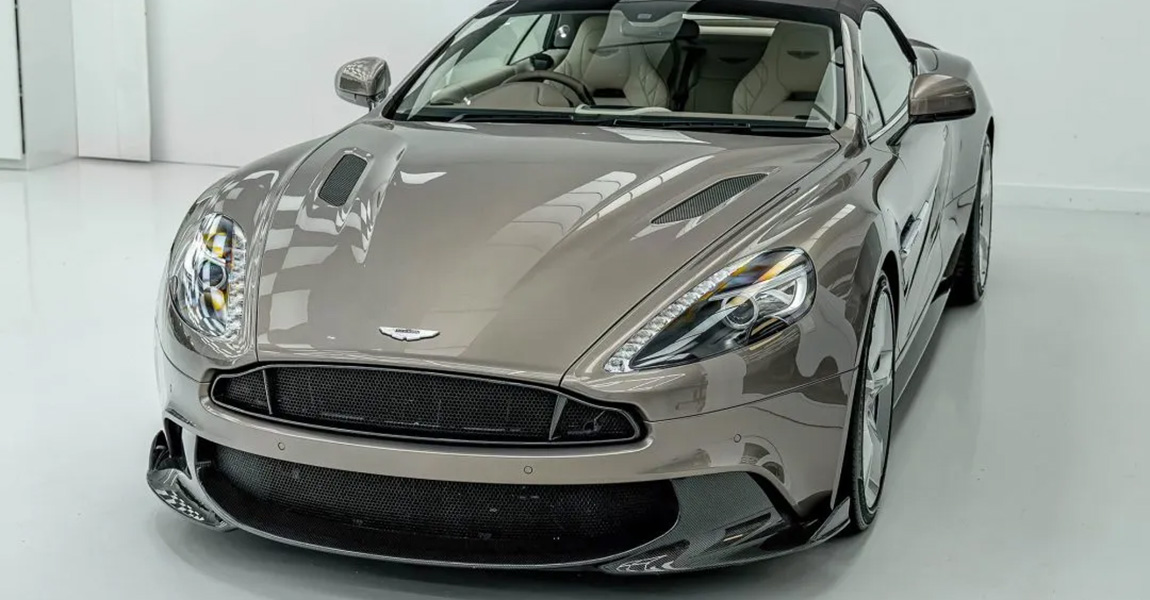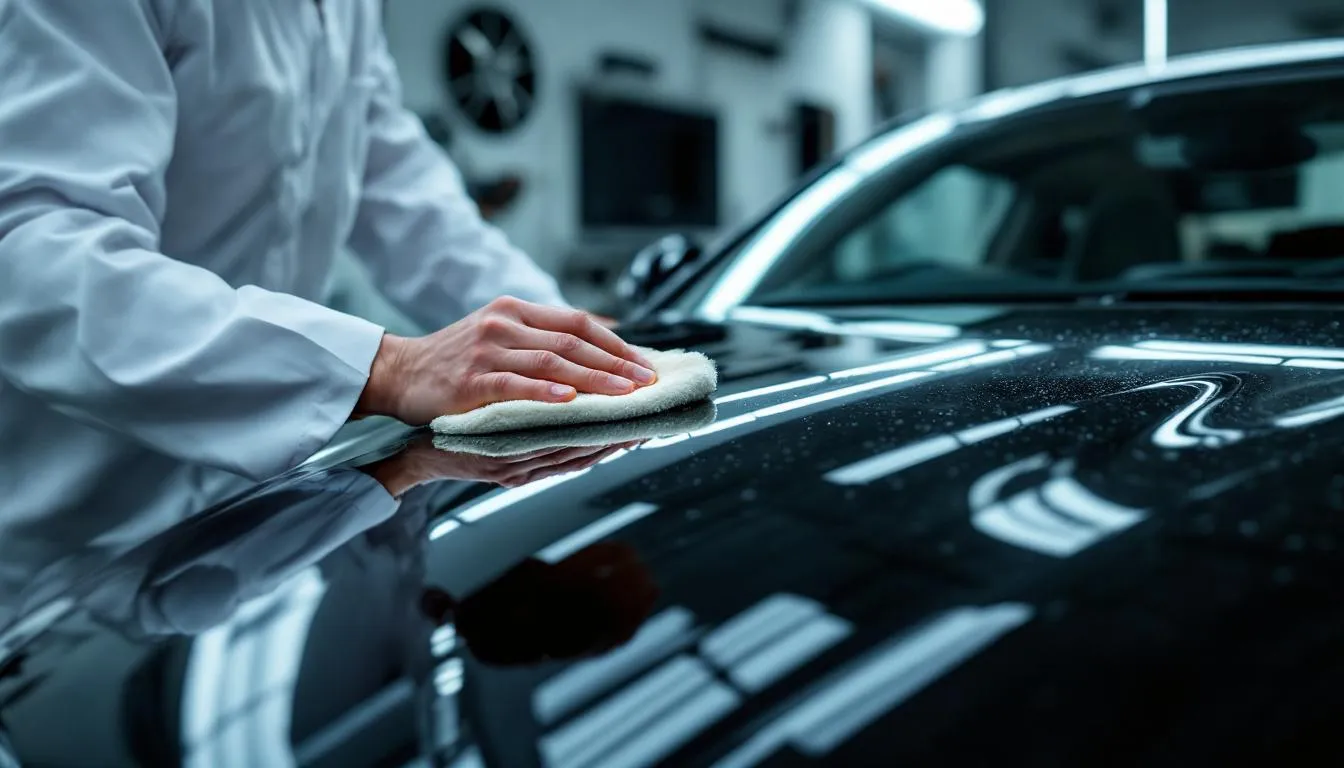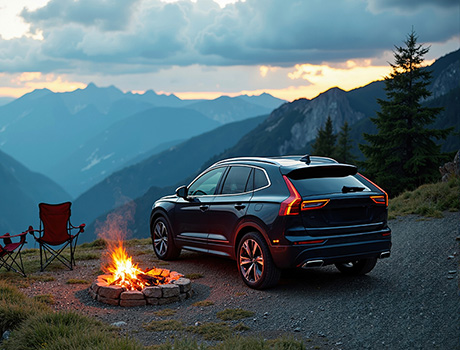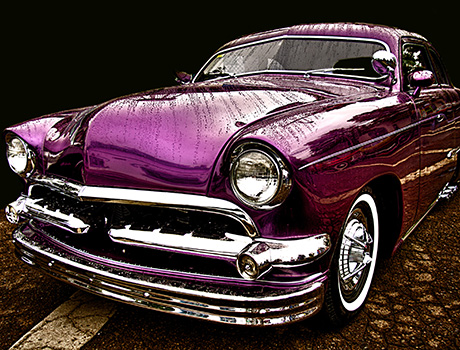Introduction: Ceramic Coat vs PPF
Ceramic coating and paint protection film (PPF) represent the two leading technologies for vehicle paint protection, each offering distinct advantages for car owners seeking to preserve their vehicle’s appearance and value. While both protect your car’s paint from damage, they work through fundamentally different mechanisms and serve different protection priorities.
This comprehensive guide compares ceramic coatings and paint protection film across all critical factors, including protection capabilities, cost analysis, installation requirements, and long-term value.
What This Guide Covers
This guide, Ceramic Coat vs PPF, focuses specifically on comparing ceramic coating versus PPF for vehicle paint protection. We cover protection performance, cost considerations, installation processes, and decision-making scenarios. This is not a basic car care guide—we assume you understand the importance of paint protection and want detailed comparison data.
Who This Is For
This guide is designed for vehicle owners considering a paint protection investment and those comparing protection options. Whether you’re protecting a new car purchase, a high-value vehicle, or simply want to make an informed decision about paint protection technologies, you’ll find actionable comparison data.
Why This Matters
Paint protection represents a significant investment that directly impacts your vehicle’s resale value, maintenance requirements, and long-term appearance. Understanding the differences between ceramic coating and PPF helps avoid costly mistakes and ensures you choose the protection method that matches your specific needs and budget.
What You’ll Learn about Ceramic Coat vs PPF
- Key protection differences between ceramic coating and paint protection film
- Cost analysis and long-term value comparison for both options
- Real-world performance in protecting against physical damage and environmental hazards
- Installation requirements and professional application considerations

Table of Contents
Understanding Paint Protection Technologies
Paint protection has become essential for modern vehicles due to increasingly aggressive environmental hazards, road debris, and UV exposure that can permanently damage car paint. Protecting your car’s paint is crucial for maintaining its durability and high-gloss finish, as well as preventing long-term environmental damage. Both ceramic coating and PPF protect your vehicle’s paint from damage, but they address different types of threats through distinct protective mechanisms.
Vehicle owners need protection against multiple hazards: rock chips from road debris, chemical damage from bird droppings and tree sap, UV rays that cause paint fading, and minor scratches from daily use. Understanding how ceramic coating and PPF address these threats helps determine which technology best aligns with your protection priorities. In the next section, we will explore the key features of both ceramic coating and PPF to help you make an informed decision.
What is Ceramic Coating
A ceramic coating is a liquid polymer that chemically bonds with your car’s paint surface to create a protective layer. This liquid polymer forms a hydrophobic barrier that repels water and contaminants while enhancing your vehicle’s glossy finish. A ceramic coat is typically applied with a 30ml bottle to the entire vehicle, making it a more affordable option than PPF.
This technology enhances paint protection by creating a sacrificial layer that resists chemical damage, makes cleaning easier, and provides UV protection. Ceramic-coated surfaces repel water, dirt, and many environmental contaminants, reducing the likelihood of permanent stains or chemical etching on your car’s paint. Additionally, ceramic coatings enhance your car’s appearance by providing a high-gloss, visually appealing finish and protecting against environmental factors that can dull or damage the paint.
What is Paint Protection Film (PPF)
Paint protection film is a transparent thermoplastic polyurethane film applied directly over your vehicle’s paint. PPF serves as a physical barrier that absorbs impacts from road debris, stone chips, and minor scratches that would otherwise damage the clear coat. Premium PPF films are constructed with multiple layers to enhance protection against chemicals, corrosion, and physical impacts, extending the longevity and durability of the protected surface.
Building on the concept of protective layers, PPF offers superior protection against physical damage due to its thickness and self-healing properties. Modern PPF can heal minor scratches when heated, making it particularly effective for high-impact areas like the front bumper and side mirrors. PPF is especially effective at preventing road rash from rocks and other debris, helping maintain the vehicle’s appearance and resale value.
Transition: Understanding these fundamental differences in protection mechanisms leads directly to comparing their real-world performance capabilities.
Protection Performance Comparison
Both ceramic coating and paint protection film offer unique benefits for vehicle protection, but their effectiveness varies significantly depending on the type of damage you’re trying to prevent.
Physical Damage Protection
PPF provides superior protection against rock chips, stone chips, and minor impacts that can damage your car’s exterior. The film’s thickness allows it to absorb impact energy that would otherwise create chips or scratches in the clear coat. Self-healing properties enable PPF to recover from minor scratches when exposed to heat exposure from sunlight or warm water.
Ceramic coating offers limited physical protection against rock chips and scratches. While high-quality ceramic coatings create a harder surface, they cannot prevent stone chips or absorb impact damage like PPF. The coating’s primary strength lies in surface protection rather than impact resistance.
Chemical and Environmental Protection
Ceramic coating excels at protecting against chemical damage from bird droppings, tree sap, and acid rain. The hydrophobic properties create a barrier that prevents contaminants from bonding with your car’s paint, making removal easier and reducing the risk of permanent stains or etching.
PPF also resists chemical damage and provides excellent UV protection to prevent paint fading. However, its primary strength remains physical protection rather than chemical resistance. Both PPF and ceramic coating offer effective UV protection, helping maintain your vehicle’s paint color over time.
Hydrophobic Performance
Ceramic coating provides superior hydrophobic properties, creating dramatic water beading that helps keep your car clean. The coating repels water, dirt, and many contaminants, making regular washing easier and more effective. This makes cleaning easier and reduces the frequency of detailed cleaning sessions.
PPF offers moderate hydrophobicity, with some products featuring enhanced water-repelling properties. However, the hydrophobic properties of PPF typically don’t match the same level achieved by ceramic coating applications.
Key Points: Ceramic Coat vs PPF
- PPF excels at preventing physical damage and rock chips
- Ceramic coating is superior for chemical resistance and hydrophobic properties
- Both provide UV protection, but through different mechanisms
Transition: These performance differences directly impact the cost and installation considerations for each protection method.
Customization Options
When it comes to protecting your car’s paint, customization is key to achieving the right balance between protection, appearance, and budget. Paint Protection Film (PPF) offers flexible application options, allowing car owners to choose between partial coverage—such as the front bumper, hood, and side mirrors—or full coverage for the entire vehicle. Partial coverage is a popular choice for daily drivers who want to shield high-impact areas from rock chips and road debris without the expense of wrapping the whole car. For those seeking comprehensive protection and pristine condition, full coverage PPF safeguards every inch of your vehicle’s paint from physical damage.
Ceramic coating also provides customization, as it can be applied not only to the paint but also to wheels and glass, delivering a uniform, high-gloss finish and hydrophobic properties across the entire vehicle. This makes cleaning easier and helps maintain a flawless appearance. By selecting the right combination of coverage and products, car owners can tailor their paint protection strategy to their unique needs, ensuring maximum protection and a stunning look for their car.

Self-Healing Technology
Self-healing technology has revolutionized paint protection, especially for car owners who want their vehicle to look flawless with minimal effort. High-quality paint protection film (PPF) is engineered with self-healing properties that allow minor scratches, swirl marks, and scuffs to disappear when exposed to heat—whether from sunlight or a warm water wash. This means that everyday wear, such as bug splatter, tree sap, or minor abrasions, won’t leave a lasting mark on your car’s paint.
Unlike ceramic coating, which provides excellent chemical resistance and hydrophobic protection but does not self-repair, PPF with self-healing technology keeps your car’s exterior looking pristine without the need for frequent paint correction. This feature is especially valuable for daily drivers who regularly encounter road debris and environmental hazards. By choosing a PPF with self-healing properties, car owners can enjoy a consistently flawless finish and reduce the time and cost associated with maintaining their vehicle’s appearance.
Cost Analysis and Installation Comparison
Paint protection investment decisions require understanding both upfront costs and long-term value, as professional installation quality significantly affects performance and longevity for both ceramic coating and PPF. For many vehicle owners, the main concern is balancing cost with the level of protection and appearance enhancement they desire.
Installation Process Comparison
Ceramic coating application: The application process requires thorough paint correction to remove swirl marks and imperfections, followed by careful coating application and curing time. Professional installation ensures proper surface preparation and even coverage across the entire vehicle.
PPF installation: Requires precision cutting, careful positioning, and expert application to avoid bubbles or misalignment. Professional installation is essential due to the complexity of applying PPF to curved surfaces and ensuring seamless coverage in high-impact areas.
Both protection methods require professional installation for optimal results, though PPF demands more specialized expertise due to the physical application challenges of conforming film to complex vehicle surfaces.
Cost Breakdown Analysis
Protection Method | Partial Coverage | Full Coverage | Duration |
|---|---|---|---|
Ceramic Coating | $400-$800 | $800-$2,000 | 2-5 years |
PPF | $800-$2,500 | $2,500-$5,000+ | 7-10 years |
Combined Approach | $1,200-$3,000 | $3,500-$7,000+ | Varies |
Factors affecting price include vehicle size, selected coverage area, product quality, and regional labor rates. PPF costs more due to higher material and labor costs, while ceramic coating offers more affordable, comprehensive protection for the whole car.
Longevity and Value Comparison
PPF typically lasts 7-10 years with proper maintenance, offering superior durability for long-term protection. High-quality paint protection film maintains its protective properties and clarity throughout its lifespan when professionally installed.
Ceramic coating duration ranges from 2 to 5 years, depending on product quality and maintenance. While requiring more frequent reapplication, ceramic coating offers excellent value for car owners who prioritize appearance enhancement and chemical protection over maximum physical protection.
Transition: These cost and performance factors create common decision-making challenges that vehicle owners must navigate.
Warranty and Support
Investing in paint protection is not just about the initial application—it’s also about long-term peace of mind. Leading manufacturers of paint protection film (PPF) and ceramic coating back their products with comprehensive warranties that cover issues like defects, yellowing, and cracking. For example, a high-quality PPF may come with a 10-year warranty, ensuring your vehicle’s paint remains protected and looking its best for years.
Professional installation is essential to maintain warranty coverage, as certified technicians follow precise procedures that guarantee optimal performance and durability. Should any issues arise, reputable installers and manufacturers provide dedicated support, offering guidance on maintenance, repairs, and warranty claims. By choosing trusted brands and professional installation, car owners can be confident that their investment in paint protection—whether PPF, ceramic coating, or both—will deliver comprehensive protection and keep their car in pristine condition.
Removing Protection Options
The ability to remove paint protection is an important consideration for car owners who may want to update their protection strategy or restore their vehicle’s original finish. Paint protection film (PPF) is designed to be fully removable without damaging the underlying paint, making it an excellent choice for leased vehicles or cars that may need to be returned to their original state. The removal process is straightforward when performed by professionals, ensuring the paint remains intact and protected.
Ceramic coatings, while more durable and long-lasting, are more challenging to remove. High-quality ceramic coatings can be removed using specialized products and techniques, but it’s crucial to follow the manufacturer’s recommendations to avoid harming the paint. Understanding the removal process for both PPF and ceramic coatings allows car owners to make informed decisions about their vehicle’s protection, ensuring flexibility and maintaining the car’s value and appearance over time.
Combining Protection Options
For car owners seeking the ultimate in paint protection, combining paint protection film (PPF) and ceramic coating delivers unmatched results. By applying PPF to high-impact areas like the front bumper, hood, and side mirrors, you gain robust defense against rock chips, minor scratches, and road debris. Adding a ceramic coating to the entire vehicle—including on top of the PPF— enhances the car’s appearance with a high-gloss finish, provides hydrophobic properties for easier cleaning, and offers additional protection against UV rays and chemical damage.
This dual-layer approach leverages the unique strengths of both technologies: PPF’s self-healing capabilities and physical protection, and ceramic coating’s chemical resistance and ease of maintenance. The result is comprehensive protection, maximum durability, and a consistently pristine look for your car. Whether you’re a daily driver or a car enthusiast, combining PPF and ceramic coating ensures your vehicle’s paint remains flawless and protected from every angle.

Common Decision-Making Challenges and Solutions
Vehicle owners frequently face situations where deciding between ceramic coating and PPF requires weighing protection priorities against budget constraints and usage patterns.
Challenge 1: Limited Budget but Want Maximum Protection
Solution: Apply PPF to high-impact areas like the front bumper, side mirrors, and door handles, then apply ceramic coating to the entire vehicle for comprehensive protection.
This hybrid approach provides superior protection against rock chips and other physical damage, while ensuring the entire car benefits from chemical protection and hydrophobic properties. Many car owners find this combination offers the best balance of protection and value.
Challenge 2: New Car vs Used Car Protection Decisions
Solution: New cars benefit from immediate PPF installation to prevent the first rock chip or scratch, while used cars may prioritize ceramic coating to enhance appearance and protect against further deterioration.
New vehicles in pristine condition maximize PPF value since the film protects original paint. Used cars may require paint correction before either protection method, making ceramic coating more cost-effective for improving appearance while adding protection.
Challenge 3: Daily Driver vs Show Car Protection Needs
Solution: Daily drivers need PPF for road hazards and real-world protection, while show cars benefit from ceramic coating’s gloss enhancement and ease of maintenance for that pristine look.
Daily driving exposes vehicles to more rock chips, road debris, and minor impacts, which PPF effectively handles. Show cars prioritize appearance and ease of cleaning, where ceramic coating’s hydrophobic properties and glossy finish provide the most benefit for maintaining that pristine condition.
Transition: These practical scenarios help clarify the decision-making process based on individual priorities and circumstances.
Conclusion: Ceramic Coat vs PPF
The choice between ceramic coating and paint protection film depends on your primary protection needs, budget constraints, and vehicle usage patterns. PPF offers superior protection against physical damage and rock chips, while ceramic coating excels at chemical protection, appearance enhancement, and ease of maintenance. Neither option provides universal protection – each serves specific priorities in vehicle care.
To Get Started:
- Assess your primary protection needs (physical damage prevention vs chemical/aesthetic protection)
- Set a realistic budget, including professional installation costs
- Consult with certified installers at a reputable detail shop for vehicle-specific recommendations
Related Topics: Consider combining both technologies for maximum protection, understand maintenance requirements for your chosen protection method, and review warranty coverage and terms before making your final investment decision.
Additional Resources
For vehicle owners seeking comprehensive protection, many professional installers offer combination packages that apply PPF to high-risk areas and ceramic coating to the entire vehicle. This approach maximizes both physical protection and aesthetic benefits while providing the unique benefits of each technology.
Products like Gtechniq Halo can also be applied over PPF to provide a ceramic-like, hydrophobic coating that improves water repellency, gloss, and ease of maintenance, further extending the durability and cleanliness of protected surfaces. Contact Pro-Tech Auto Shield & Nano Coatings for expert advice today!








WHAT OUR CLIENTS ARE SAYING